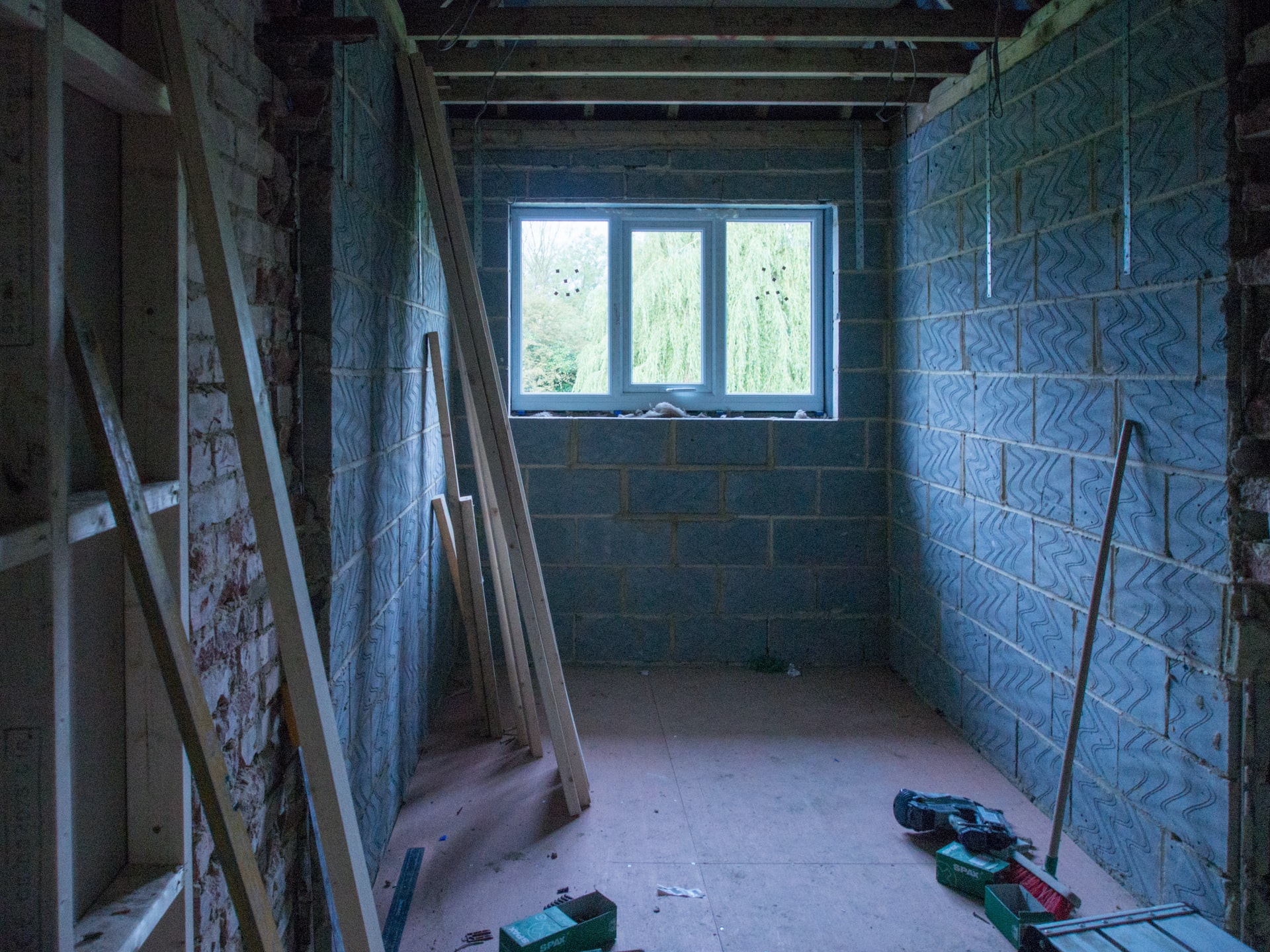Home additions are a great way to increase your livable square footage while boosting the value of your property. However, these additions can be costly for many homeowners. Whether you’re preparing your home for sale or just want to give it a fresh look, one of the most common questions you may ask yourself is how you will finance the project.
Unless you’ve been saving for the project, you’ll probably need home improvement financing. Fortunately, there are several ways to finance a home addition, including cash-out refinancing, to help make the process more seamless. Keep reading to learn about the various financing options and what to consider when choosing how to finance your home addition.
Types of Home Additions
Home additions come in different sizes, shapes, and budgets, which play a critical role when choosing the best financing option for your project. Here are three popular types of home additions.
Full Addition
A full home addition generally increases the square footage of a property. This can include anything from extra rooms to building a new kitchen or garage addition. However, depending on the project, these home additions take the longest time to finish and typically cost more.
By expanding the square footage, homeowners can create additional living space to accommodate growing families, enhance comfort, and increase the overall functionality of their homes. However, it’s important to note that such projects often require careful planning, architectural design, obtaining necessary permits and working with skilled contractors, which can contribute to extended project timelines and higher costs.
Despite the potential challenges, a well-executed full home addition has the potential to significantly enhance the property’s market value and provide a tailored living space that meets the specific needs and preferences of the homeowners.
Micro Addition
As the name suggests, a micro addition is a small home improvement project that doesn’t require building a new room. Instead, it can include bump-outs on existing rooms or bathroom remodels. As a result, micro additions are typically cheaper than full additions and take a shorter period of time to complete.
Micro additions offer homeowners the opportunity to enhance their living spaces without the need for extensive construction. Furthermore, micro additions can effectively address specific pain points or functional limitations within the home, such as adding storage space or accommodating a growing family, without the need for extensive structural modifications.
By strategically incorporating micro additions, homeowners can achieve meaningful improvements to their living environment while maximizing the value of their property.
Second Story Addition
If you need to increase your square footage, don’t want to build outwards, or don’t want to use your yard size, a second story could be a perfect choice. Building a second story is quite expensive compared to other home additions, but it has the best return on investment if you ever decide to sell your home.
By opting to build upward rather than outward, homeowners can effectively maximize their square footage and create additional living space while preserving outdoor areas for landscaping, recreation, or future development. While it’s true that building a second story can be a more expensive undertaking compared to other home additions, the potential return on investment is substantial, especially if the homeowner intends to sell the property in the future.
A well-executed second-story addition can also provide homeowners with the opportunity to customize their living space to better suit their lifestyle, accommodate growing families or create dedicated work or leisure areas. This option offers a compelling blend of increased living space, potential for enhanced property value, and the preservation of outdoor areas, making it an appealing choice for homeowners with long-term investment goals and a desire for expanded living space.
Reasons Why Home Addition is a Great Idea
There are several reasons many homeowners are considering home additions. While every homeowner has a unique reason for adding on to their home, here are the most common reasons why a home addition is a good idea.
- Extra Living Space: The number one reason homeowners are getting home additions is the need for extra living space. Whether your family is growing or just needs more space, adding extra rooms bathrooms, or expanding the kitchen can offer the comfort you need.
- More Functionality: Adding a space where you can make your home office, gym, or a place to keep your musical instruments gives you more functionality without giving up a room.
- Better Alternative to Moving: If you have a growing family, home addition is a better option than moving to a bigger house. Plus, you can still get the chance to live in the neighborhood you’re used to.
- Extra Income: If you’re considering an extra room as your home addition project, you can earn extra income monthly by renting out the space or becoming an Airbnb host.
- Increase Your Home’s Value: A home addition is a great way to increase the current value of your home. Not all additions, though, are guaranteed to boost the value of a property. Depending on the addition you want, you may get an ROI when you decide to sell down the road.
Financing Your Home Addition
Here are seven common home addition financing options and when each works best to help you figure out the best option for you. Each has pros and cons worth considering, and others are the best fit for homeowners in specific situations.
Cash-Out Refinance
You can refinance your existing mortgage if you don’t want a second mortgage. When you refinance, you’re simply paying off your current mortgage and obtaining a new one with enough cash to refinance your home addition.
Cash-out refinancing is a great option for homeowners looking for better repayment terms and potentially capitalizing on lower interest rates than their original mortgage.
Pros:
- Consolidate debt with a potentially lower interest rate
- Possible tax deductions on mortgage interest
Cons:
- Requires equity in your home
- It could extend your mortgage payoff timeline
- Fees, including closing costs and possible appraisal fees
Home Equity Loan
If you’ve owned a home for a while, you’ve probably accumulated home equity, which you can borrow a loan against. Lenders allow you to borrow up to 80% of your home’s equity value. With a home equity loan, you’ll receive a lump sum amount of capital, payable within a set period, plus a fixed interest rate.
Pros:
- Lower interest rate compared to personal loans
- Fixed interest rate and predictable monthly payments
- Potential tax deductions on mortgage interest
Cons:
- Using your home as collateral
- Additional closing costs
- Possible prepayment penalties
Home Equity Line of Credit (HELOC)
Alternatively, you can use your home equity to secure a home equity line of credit (HELOC), which lets you tap into the funds on a needed basis. HELOC works much like a credit card, where you only pay interest on the amount you borrow. However, HELOCs typically have a variable interest rate, meaning monthly payments may fluctuate as rates change.
Generally, a home equity loan or HELOC is ideal for homeowners with sufficient equity.
Pros:
- Only pay interest on the amount you use
- Flexibility in borrowing and repayment
- Possible tax deductions on mortgage interest
Cons:
- Variable interest rates could increase over time
- Risk of overspending
- Using your home as collateral
Construction Loan
Construction loans were originally designed to cover the costs of building a home, but homeowners can also use them to finance home additions. They are typically determined based on the home’s future value after construction.
This type of loan has several drawbacks, which may not be the best choice for financing a home addition. For one, you may end up paying more over time because you’ll be forced to refinance your home at a higher interest rate.
Pros:
- Designed specifically for major home projects
- Interest-only payments during the construction period
Cons:
- Requires strong credit score
- Strict application process and qualifications
- May need to refinance after the project
FHA 203k or Fannie Mae HomeStyle Loan
FHA 203k or Fannie Mae HomeStyle Loan are government loans ideal for homeowners looking to simultaneously refinance their first mortgage while freeing up some cash for a home addition. These loans allow you to borrow against the after-renovation value, increasing your borrowing power.
Pros:
- One loan for both home purchase and improvements
- Lower credit score requirements compared to conventional loans
Cons:
- Limited to specific types of projects
- Stricter program requirements and limitations
- It can only be used in a primary residence
Personal Loan or Savings
If you have enough savings, you can use them to cover the costs of your home addition project. Alternatively, you can opt for personal loans to finance your home renovation quickly. Unlike home equity loans, most personal loan lenders approve funds within a week because it has less underwriting process.
Pros:
- No need for home equity
- Faster approval for personal loans
- Savings incur no interest
Cons:
- Higher interest rates for personal loans
- Longer time to accumulate savings
- Risk of depleting emergency funds
Home Improvement Loan
A home improvement loan is an unsecured personal loan that gives you access to funds to finance home renovations, upgrades, remodels, or repairs. This type of funding usually comes in a lump sum, repayable in monthly installments over a set period of time.
Since the loan is unsecured, collateral is not needed to back up the funding. For this reason, your interest rate is based on your credit score.
Pros:
- No need for home equity
- Competitive interest rates compared to personal loans
Cons:
- It may require a good credit score
- Possible prepayment penalties
Things to Consider When Choosing How to Finance Your Home Addition
Before deciding on the best financing option for your home addition, here are some things to consider.
- Cost of the Home Addition: What’s the overall estimated cost of your home addition? Depending on the project, a certain financing option is more ideal than another.
- Equity in Your Home: If you’ve built enough equity in your home, a home equity loan or HELOC might be a good option to consider.
- Your Credit Score and Credit History: Lenders will always look at your credit score and history to determine your creditworthiness. Where your credit score stands currently may impact the financing option you may qualify for.
- Your Other Loans and Debts: If you have other loans and debts, it’s a good idea to weigh if you can manage the monthly payments if you add another loan. Keep in mind that missing payments could negatively impact your credit score.
- The Monthly Payments: As with any other loan, you’ll repay the borrowed amount typically monthly. You should be able to handle the payments comfortably.
- Loan Terms and Length: How long it will take to repay your loan is called the loan term. The length of time it takes is something to consider. Choosing a longer loan term could result in more payments over time.
Conclusion: Choosing the Best Option to Finance Your Home Addition
When choosing how to fund a home addition, it’s important to consider your individual needs and situation. Considering factors like your project budget, equity levels, credit profile and desired repayment structure will help determine the most appropriate financing vehicle for funding a home addition.
A cash-out refinance or home equity loan/line of credit requires significant home equity, so they are best if you have owned your home for several years and it has appreciated substantially in value.
Construction loans are well-suited for larger renovations that will take months to complete. They provide funds in scheduled disbursements throughout the building process.
FHA 203(k) or Fannie Mae HomeStyle loans can work for moderate budget projects when you lack equity, as they wrap the costs into a new mortgage. However, there are upfront mortgage insurance costs.
For smaller-scale jobs under $25,000, a personal loan or dipping into savings may suffice since closing costs on other options may outweigh their amounts.
Home improvement loans are well-suited for mid-sized renovations between $25,000-$50,000, as they provide funds specifically for renovations with fixed monthly payments.
If you’ve owned a home for a while and accumulated home equity, a home equity loan or home equity line of credit (HELOC) is ideal.







